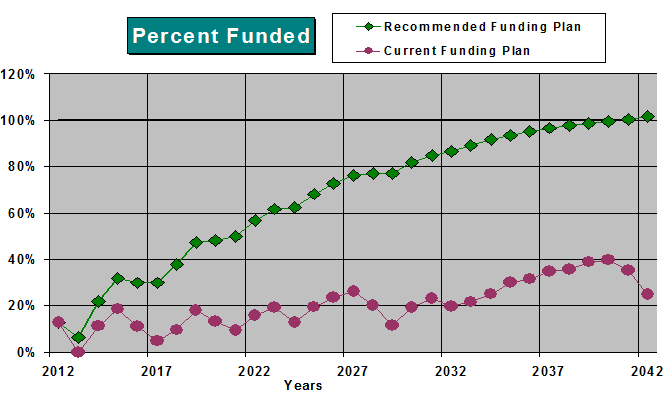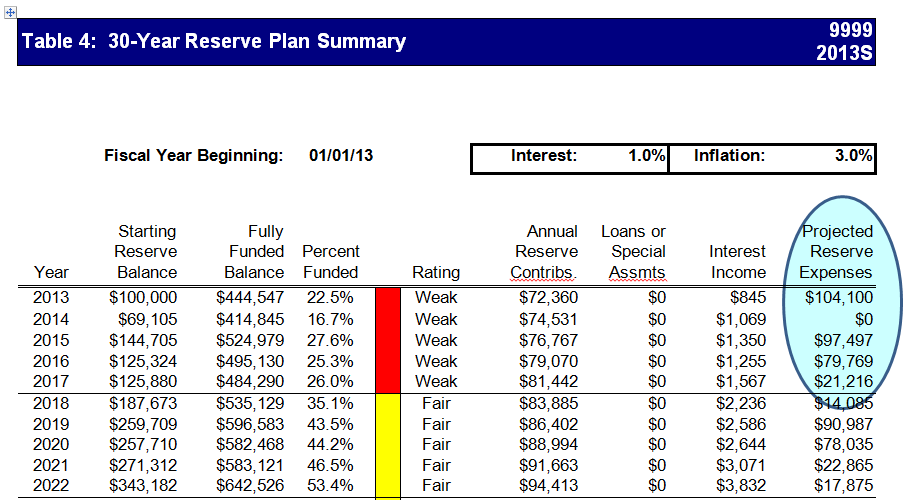Because association boards are run by volunteers with typically high turnover, fundamental education will always be at the heart of their success. Within my 2014 newsletters to you, I will address typical misconceptions and objections with reserve planning, and arm you with insight and strategy using information commonly found in your reserve study to simplify the message.
This month we will look at some of the problems associated with the requirement that your reserve study be a 30-year forward looking budget model. Typical objection: “why do we care about paying for something 20 years down the road.” Quite often when noting the long term nature of the study, the reader’s brain shuts off right there and a budget decision is made based upon emotion (e.g. we can’t raise dues by more than x%) rather than any sort of calculations or deeper understanding.
If the association is under-funded and finding it difficult to increase reserve contributions, to begin moving forward, use the two charts below. First, you must clearly understand and communicate the current fund status. The Percent Funded chart illustrates that in purple, as well as what the future may look like with the current contribution rate and 3% annual increases. In this case, the profile is high risk for special assessment and cash flow needs are not for some distant target. In fact reserves will be fully depleted next year if they do not act soon.

Next, create near and mid-term internal action plans using the reserve plan summary below. Focus on the far right column of reserve expenses. Note: Annual Reserve Contributions shown in this table mirror the recommended plan, not the actual. Using simple addition and subtraction, total the reserve expenses for the next five years to determine how much you will need in addition to your current reserves in the bank, while leaving some margin for contingency. Then, using the reserve plan detail, understand the specific project’s scope and schedule and work to find the best value. Alter the schedule if need be based upon current condition and/or cash flow needs.

While this simple approach may still leave problems for the mid and long terms, owners care most about the next 5 to 10 years and this strategy will help move the association forward. For associations currently in a strong funded position – congratulations! Continue to emphasize that you are collecting for current deterioration of assets that all owners are enjoying the use of.
